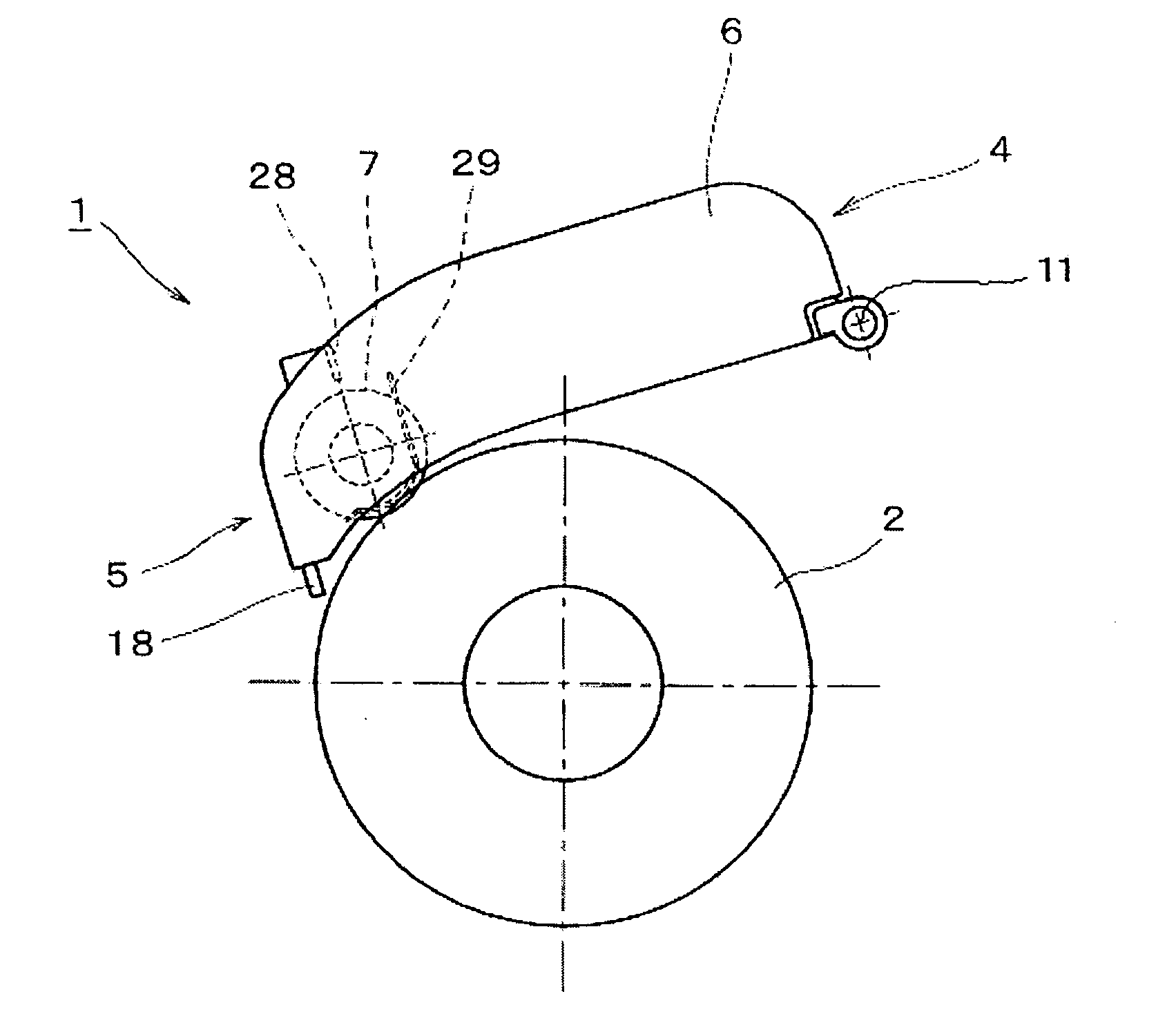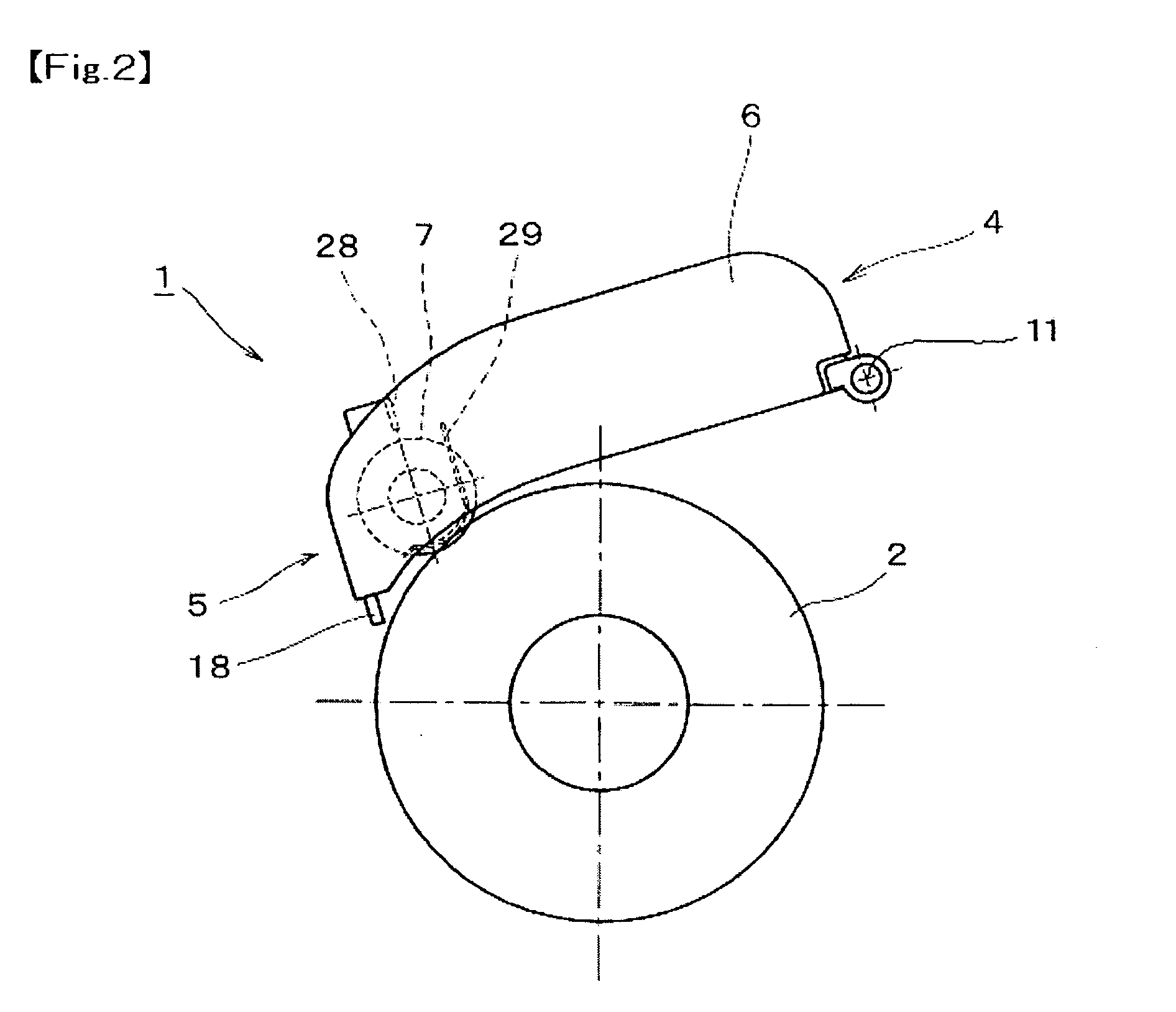Rolled paper feeding device
- Summary
- Abstract
- Description
- Claims
- Application Information
AI Technical Summary
Benefits of technology
Problems solved by technology
Method used
Image
Examples
Embodiment Construction
[0049] A rolled paper feeding device in accordance with an embodiment of the present invention will be described in detail below with reference to the accompanying drawings.
[0050] The rolled paper feeding device 1 includes, as shown in FIG. 1, a holder body 3 for rotatably supporting a rolled paper 2 and a cover part 6 whose one end part 4 is rotatably supported in a direction contacted with or separated from the rolled paper 2. The other end part 5 of the cover part 6 comes into contact with the rolled paper 2. Feed rollers 7 for feeding the paper of the rolled paper 2 and a drive part 8 for driving the feed rollers 7 to rotate are housed in the cover part 6. The feed rollers 7 are disposed on the other end part 5 side farther than the rotational center of the rolled paper 2. In addition, as shown in FIGS. 3 and 4, the drive part 8 includes a drive motor 13, a speed reducing mechanism 14 for transmitting the rotation of the motor 13 to the feed rollers 7 and an one way clutch 17 f...
PUM
| Property | Measurement | Unit |
|---|---|---|
| Length | aaaaa | aaaaa |
| Torque | aaaaa | aaaaa |
Abstract
Description
Claims
Application Information
 Login to View More
Login to View More - R&D
- Intellectual Property
- Life Sciences
- Materials
- Tech Scout
- Unparalleled Data Quality
- Higher Quality Content
- 60% Fewer Hallucinations
Browse by: Latest US Patents, China's latest patents, Technical Efficacy Thesaurus, Application Domain, Technology Topic, Popular Technical Reports.
© 2025 PatSnap. All rights reserved.Legal|Privacy policy|Modern Slavery Act Transparency Statement|Sitemap|About US| Contact US: help@patsnap.com



